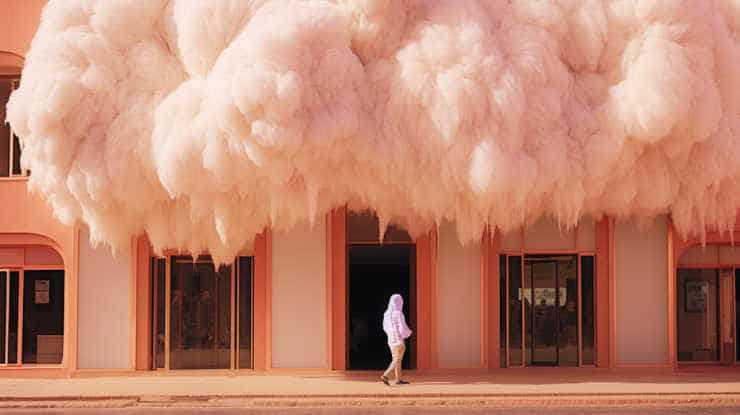According to a new study, the boundary between real friends and favourite fictional characters blurs in the part of the brain that is active when thinking about others in lonely people.
Researchers scanned the brains of “Game of Thrones” fans while they contemplated various characters on the show and their actual companions. Everyone had completed a test assessing loneliness.
The difference between those who scored the highest on loneliness and those who scored the lowest was stark.
“There were clear boundaries between where real and fictional characters were represented in the brains of the least lonely participant in our study. But the boundaries between real and some fictional people were nearly nonexistent for the loneliest participant,”
said Dylan Wagner, co-author of the study and associate professor of psychology at The Ohio State University.
Different Roads Sometimes Lead to the Same Castle
The results suggest that lonelier people may be thinking of their favourite fictional characters in the same way they would real friends, Wagner said. Wagner conducted the study with Timothy Broom, a Ph.D. graduate of Ohio State who is now a postdoctoral researcher at Columbia University.
Data for the study was collected in 2017 during the seventh season of the HBO series “Game of Thrones.”
The study involved scanning the brains of 19 self-described series fans while they thought about themselves, nine of their friends, and nine characters from the series. (The series characters were Bronn, Catelyn Stark, Cersei Lannister, Davos Seaworth, Jaime Lannister, Jon Snow, Petyr Baelish, Sandor Clegane and Ygritte.)
Participants reported which “Game of Thrones” character they felt closest to and liked the most.
“Game of Thrones” was a fantasy drama series lasting eight seasons and concerning political and military conflicts between ruling families on two fictional continents. It was ideal for this study, according to Wagner, because the large cast provided a variety of characters to which viewers could become attached.
A Lannister Never Forgets
For the study, the participants’ brains were scanned in an fMRI machine while they evaluated themselves, friends, and “Game of Thrones” characters. An fMRI indirectly measures activity in various parts of the brain through small changes in blood flow.
The researchers were particularly interested in what was happening in a part of the brain called the medial prefrontal cortex (MPFC), which shows increased activity when people think about themselves and other people.
Participants were shown a succession of names while in the fMRI machine, sometimes their own, sometimes one of their nine friends, and sometimes one of the nine characters from “Game of Thrones.”
Each name appeared above a trait, like sad, trustworthy or smart. Participants simply responded “yes” or “no” to whether the trait accurately described the person while the researchers simultaneously measured activity in the MPFC portion of their brains.
Sense of Belonging
The researchers compared results from when participants were thinking about their friends to when they were thinking about the fictional characters.
“When we analyzed brain patterns in the MPFC, real people were represented very distinctly from fictional people in the non-lonely participants. But among the lonelier people, the boundary starts breaking down. You don’t see the stark lines between the two groups,”
Wagner said.
The findings suggest that lonely people may turn to fictional characters for a sense of belonging that is lacking in their real life and that the results can be seen in the brain, Wagner said.
“The neural representation of fictional characters comes to resemble those of real-world friends,”
he said.
But even the least lonely participants were affected by the characters they cared about most in “Game of Thrones,” the study found.
Results showed that the participants’ favourite characters in “Game of Thrones” looked more like their real friends in their brains than did other characters in the show. That was true for all people in the study, no matter how lonely and no matter who their favourite character was, Wagner said.
“Your favorite characters are more real to you, regardless of loneliness,”
he said.
Abstract
People spend much of their free time engaging with narrative fiction. Research shows that, like real-life friends, fictional characters can sometimes influence individuals’ attitudes, behaviors, and self-beliefs. Moreover, for certain individuals, fictional characters can stand in for real-life friends by providing the experience of belonging. Despite these parallels between how people think of real and fictional others, it is unclear whether, and to what degree, their neural representations are similar. Does the brain treat psychologically close fictional others as it does close real-world friends, or are real others somehow privileged in their neural representation? In the present study, fans of the HBO series Game of Thrones performed a trait-evaluation task for the self, 9 real-life friends/acquaintances, and 9 fictional characters from Game of Thrones while undergoing functional magnetic resonance imaging. Using both brain decoding and representational similarity analysis, we found evidence of a categorical boundary between real and fictional others within the medial prefrontal cortex. However, the boundary between these categories was blurred in lonelier individuals. These results suggest that lonelier individuals may turn to fictional characters to meet belongingness needs, and this, in turn, alters the manner in which these categories are encoded within the social brain.
Reference:
- Timothy W Broom, Dylan D Wagner. The boundary between real and fictional others in the medial prefrontal cortex is blurred in lonelier individuals. Cerebral Cortex, Volume 33, Issue 16, 15 August 2023, Pages 9677–9689,
